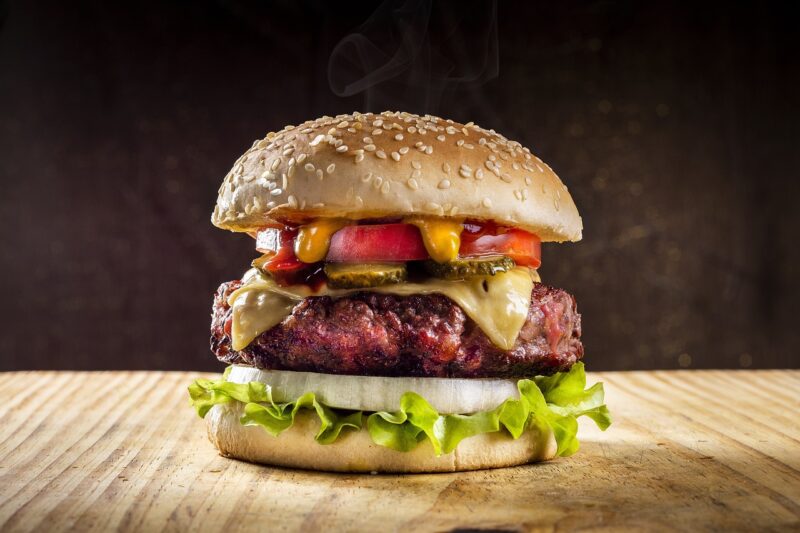The Failure of McDonald’s Arch Deluxe: When ‘Gourmet’ Didn’t Work for Fast Food
November 15, 2024

In the competitive world of fast food, not every product will resonate with consumers. One of the most notable examples of this is McDonald’s Arch Deluxe, which was launched in the late 1990s in an ambitious attempt to cater to adults craving more sophisticated burger options. This article delves deep into the factors that contributed to the failure of the Arch Deluxe and what lessons can be drawn from this interesting chapter in fast food history.
**1. The Concept Behind Arch Deluxe: Aiming for the Gourmet Market**
In the late 1990s, McDonald’s was experiencing growing competition from newer, more upscale fast food chains like Chipotle and Panera Bread. To respond to the growing trend towards gourmet dining, McDonald’s executives believed there was an underserved market segment of adults looking for a quality burger—not just a value meal. Hence, they set their sights on the Arch Deluxe.
The Arch Deluxe was advertised as a “burger for adults,” featuring a quarter-pound beef patty, crisp leaf lettuce, tomato, American cheese, special “Arch” sauce, and a sesame seed bun. The intention was clear: to elevate the standard burger experience beyond what McDonald’s was traditionally known for. The company spent a whopping $300 million on marketing the Arch Deluxe, which included an effort to target adult consumers through television ads, print media, and even regional promotions.
**2. Marketing Missteps: The Campaign’s Mixed Messages**
Despite the significant investment, the marketing campaign for the Arch Deluxe was riddled with issues. The commercials featured quirky characters and aimed at portraying the burger as sophisticated, yet relatable. One particularly noted ad showed a kid eating the Arch Deluxe and asking, “What’s the difference between you and me? You can have whatever you want!” This may have appealed to adults, but it didn’t resonate with the younger demographic that constitutes a large segment of McDonald’s customer base.
The ads were also criticized for not giving a clear message about what the burger represented. Instead of framing it as a healthy choice or a delicious alternative, the campaign became muddled, leading consumers to question what made this burger particularly gourmet. This inconsistency left potential customers unsure about whether it was worth their time and money.
**3. The Price Point Challenge**
Another critical factor in the Arch Deluxe’s failure was the pricing strategy. The burger was priced significantly higher than traditional menu items, making it a more substantial investment for customers accustomed to McDonald’s low-price offerings. Launched in 1996, it was priced around $2.50, whereas regular hamburgers cost around a dollar or less. Many regular customers likely found it hard to justify spending so much more for what they perceived as just another fast food burger.
Additionally, the notion of “fast food” generally does not align with higher price tags. Fast food is often associated with convenience and affordability. By trying to position the Arch Deluxe as a gourmet option at a premium price, McDonald’s risked alienating their loyal customer base who may have been tempted to seek alternatives that offered actual gourmet experiences, often at the same or lower price point.
**4. Competition and Market Dynamics**
When the Arch Deluxe was introduced, the fast food landscape was changing rapidly, with numerous competitors stepping into the market presenting fresher, healthier options. Many consumers began turning towards establishments with a casual atmosphere and an emphasis on quality—many of which touted their use of fresh, locally sourced ingredients.
Chains like Burger King and Wendy’s were also rapidly diversifying their menus to include upscale options. By the time the Arch Deluxe hit the market, sophisticated burger offerings from these competitors had already begun to gain traction. This meant that even with a well-executed marketing campaign, the Arch Deluxe struggled to carve its niche in a rapidly evolving market.
**5. Product Development Shortcomings**
Beyond marketing and pricing issues, the Arch Deluxe faced challenges with the product itself. For starters, the flavor profile designed to appeal to adults failed to capture the essence of fast food classics. Consumers often go to McDonald’s for nostalgic, comfort food experiences. The Arch Deluxe was not only a new price point but also offered different ingredients and expectations that some consumers didn’t find fulfilling.
The special “Arch” sauce was meant to be a unique selling point, but many customers did not enjoy its flavor. Coupled with the additional toppings, the burger was more complex than what many fast-food consumers wanted. The simplicity of a Big Mac or cheeseburger surpassed the culinary complexities of the Arch Deluxe, leading to a less favorable reception from loyal customers seeking their familiar tastes.
**6. The Aftermath and Learning Points**
Eventually, the Arch Deluxe was discontinued in 2000, a mere four years after its introduction. The discontinuation was followed by a significant reevaluation of McDonald’s marketing strategies and product designs. The company recognized that while it was critical to innovate, it was equally crucial to maintain the core identity that made it successful in the first place.
The failure of the Arch Deluxe serves as a cautionary tale about the importance of understanding customer preferences and market dynamics. Here are some key takeaways from the Arch Deluxe experience:
– **Know Your Audience:** Whether entering a new market or creating a new product, brands need to understand the preferences and spending habits of their target audience.
– **Clear Messaging:** Successful marketing campaigns require clear and consistent messaging that aligns with brand values and resonates with consumers’ expectations.
– **Embrace Simplicity:** Sometimes simpler ideas, classic flavors, and nostalgia have more appeal than complex offerings. Returning to a brand’s roots may yield better results than trying to pivot in unfamiliar directions.
**Conclusion**
The Arch Deluxe’s failure teaches that success in the fast-food sector relies on understanding the intricate balance between quality, flavor, customer expectations, and clear communication. Moving forward, fast-food brands should leverage these insights and prioritize core brand values while remaining receptive to changing consumer preferences. While the Arch Deluxe was a well-intentioned effort to innovate and cater to a growing market segment, today it’s a reminder that being different isn’t always the same as being better.








